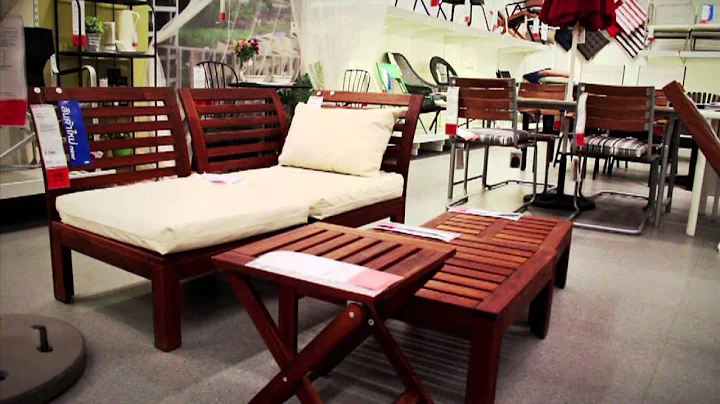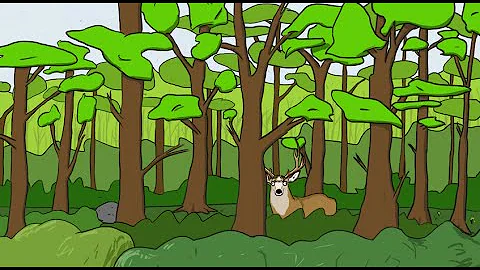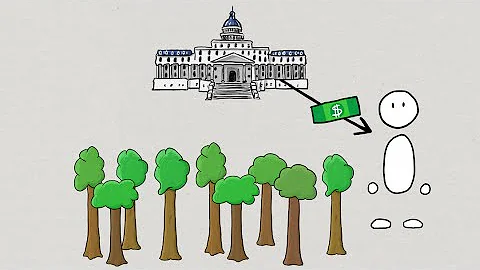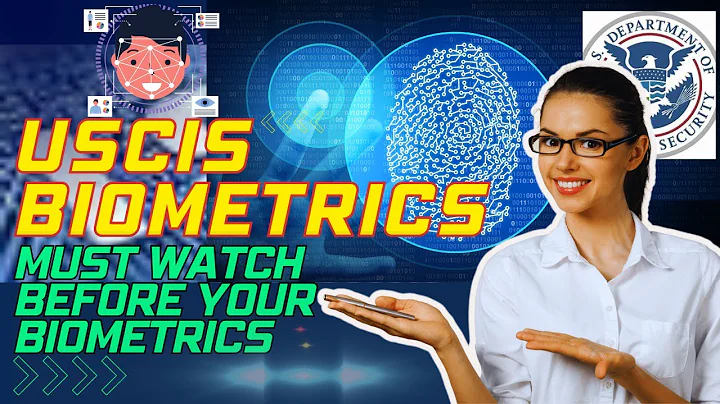1, Forestry

One third of Lithuania is covered by forests, national parks and protected areas. This part of the forest covers an area of 2.1 million hectares and is its main natural resource. About 33% of the forest area is privately owned, and more than 60% is commercially owned. Economically, forestry is an important contributor to Lithuania's GDP, as Lithuania is a net exporter of timber and wood products globally. Specifically, 3.8% of Lithuania's GDP2 comes from the wood industry. In 2016, Lithuania exported $20 million worth of wood and its products to the United States. The largest forest in Lithuania is the Danava Forest, covering an area of 1,350 square kilometers. Other large forests include Labanoras Forest (911 square kilometers), Kazlu Ruda Forest (587 square kilometers) and Karsuva Forest (427 square kilometers). The average age of trees in Lithuanian forests is 53 years. Lithuania is located in a mixed forest zone, and the most common tree species are Scots pine (42%), spruce (22.8%) and other tree species (35.2%), including birch .
2, Lakes and Fish

Lithuania has more than 2,800 lakes and 816 rivers, the largest of which is the Nemanus River. There are more than 50 species of fish in Lithuania. Fishing includes night fishing, sport fishing, ice fishing and other forms. ?veju Namai is one of the popular places for sport fishing in Lithuania. Fish caught include salmon, zander, turbot, bream, catfish, sole, Baltic herring, Baltic cod and seabass. In the Lithuanian winter, ice fishing is very popular. Lithuania also has fishery museums such as Mindunia.
3, Mineral Resources

In 2014, the mining industry accounted for 21% of Lithuania's GDP. Lithuania has large reserves of dolomite, clay, gypsum sand, quartz sand and limestone. These minerals produce high-quality ceramics, cement and glass, making a significant contribution to the construction industry. Other mineral resources include iron ore, phosphate rock, sulfate, etc. Amber is a natural resource found along the Baltic Sea coast. Rivers such as the Neman River generate hydroelectric power. Lithuania has most of its thermal energy along the Baltic Sea coast, but both thermal energy and oil are extracted through open-pit mining.
4, Land and Agriculture

Lithuania's land area is 65,300 square kilometers and provides habitat for many species of wildlife, including wild boars, otters, wolves, deer, foxes, beavers, elk, stags, martens and minks. . Lithuania is also home to hundreds of bird species, such as white storks, swans, herons, ducks, cormorants, eagles and rare vultures. In addition to wildlife, Lithuanian land is used for agriculture and forestry. Agriculture is the second largest economic sector in Lithuania. During the 19th and 20th centuries, Lithuania was primarily an agricultural economy. Currently, the proportion of agricultural land is 35% cultivated land, 12% permanent crops, and 7% permanent pasture. Swamp drainage and land reclamation efforts in Lithuania made the land available for agriculture. Livestock farming is the most popular form of agriculture in Lithuania. Farmers focus on raising pigs and dairy cows. Agricultural research institutions - Lithuanian Agricultural University, Lithuanian Agricultural Research Institute and Lithuanian Veterinary College also help promote agricultural development.

Project advantages:
1) Convenient travel: the passport can be used visa-free in the United States, Canada, Singapore , Japan, South Korea, the United Kingdom, all EU and Schengen and more than 180 countries and regions;
2) The application conditions are simple: No academic qualifications, no language, no bank deposit and other requirements, no immigration supervision;
3) Short processing period: you can obtain EU passport in 8-10 months ;
4) EU citizens: In addition to enjoying various benefits of Lithuania, You can also freely move to other EU countries to settle, live, work, study, etc.
5) Fingerprints can be collected in China without logging in to avoid epidemic risks;
For specific consultation on immigration projects, see the author's profile and add V, or the author's public account [Bo Minghan talks about overseas].

Required information:
1) Scanned copy of the applicant’s entire passport;
2) scanned copy of the applicant’s Chinese Resident ID Card (both sides);
3) Applicant’s passport size color photo (
6 months old, white bottom, electronic version);
4) Scanned copy of the notarized certificate of no criminal record (Chinese and English);
5) Scanned copy of the notarized certificate of birth certificate (Chinese and English);
6) Electronic version of the applicant’s ten fingerprints.




![Agricultural Commodity Chains & Economies of Scale [AP Human Geography Unit 5 Topic 7] - DayDayNews](https://i.ytimg.com/vi/kT9_85P0G1c/hq720.jpg?sqp=-oaymwEcCNAFEJQDSFXyq4qpAw4IARUAAIhCGAFwAcABBg==&rs=AOn4CLBh7PCxNCIfuSi0PDhCnV3sJRxcSw)






![Von Thünen Model Of Agricultural Land Use [AP Human Geography Unit 5 Topic 8] (5.8) - DayDayNews](https://i.ytimg.com/vi/yZDy7bTA82k/hq720.jpg?sqp=-oaymwEcCNAFEJQDSFXyq4qpAw4IARUAAIhCGAFwAcABBg==&rs=AOn4CLBhmwRnY0YAPTt04XX_S9mRqu3nKg)










